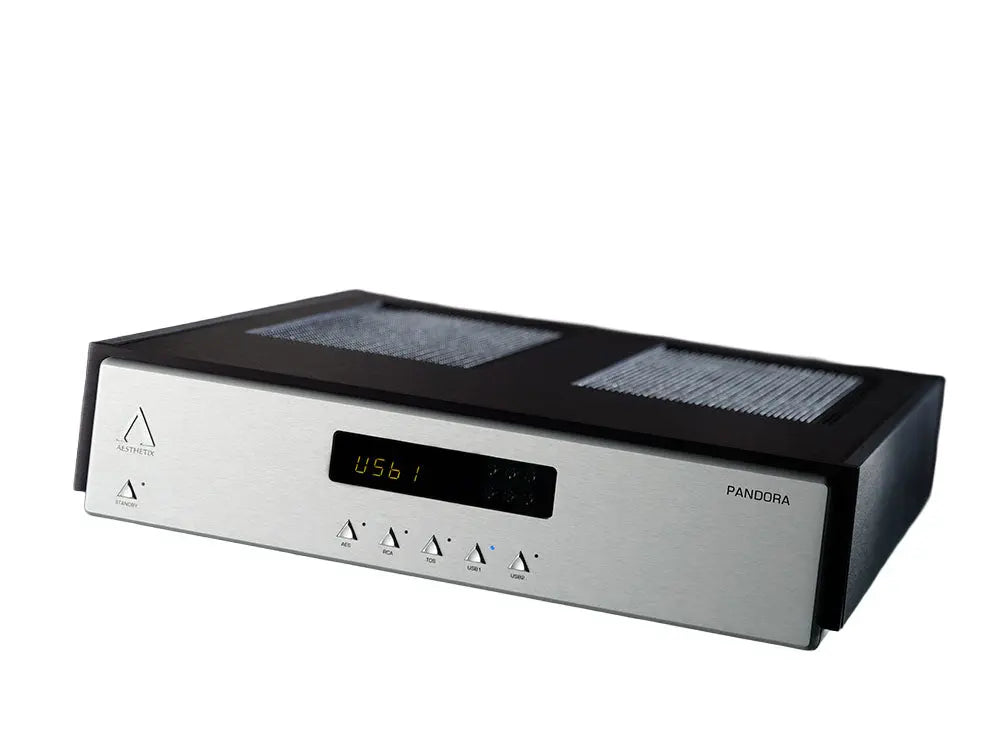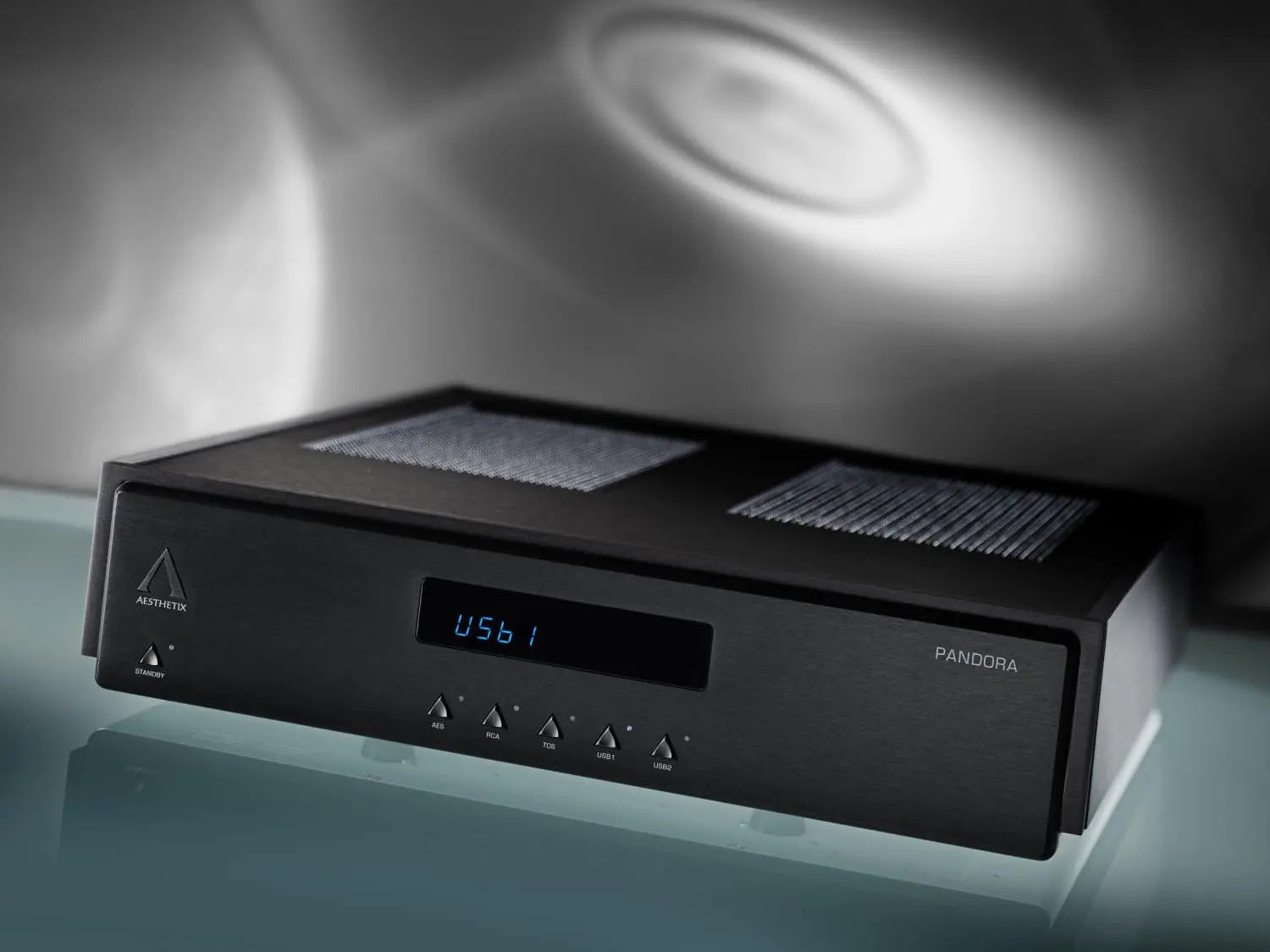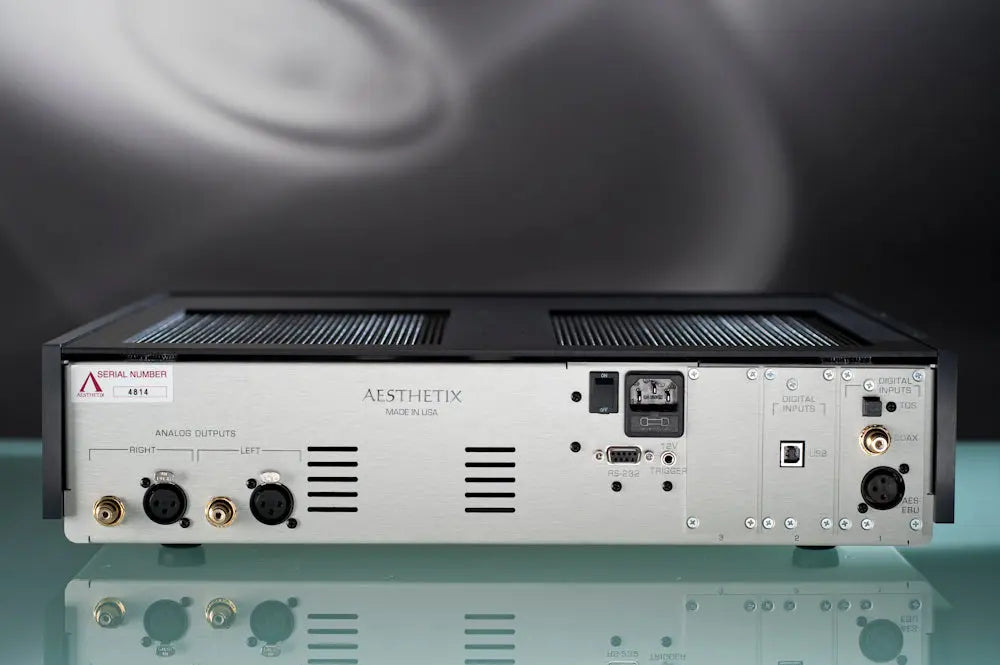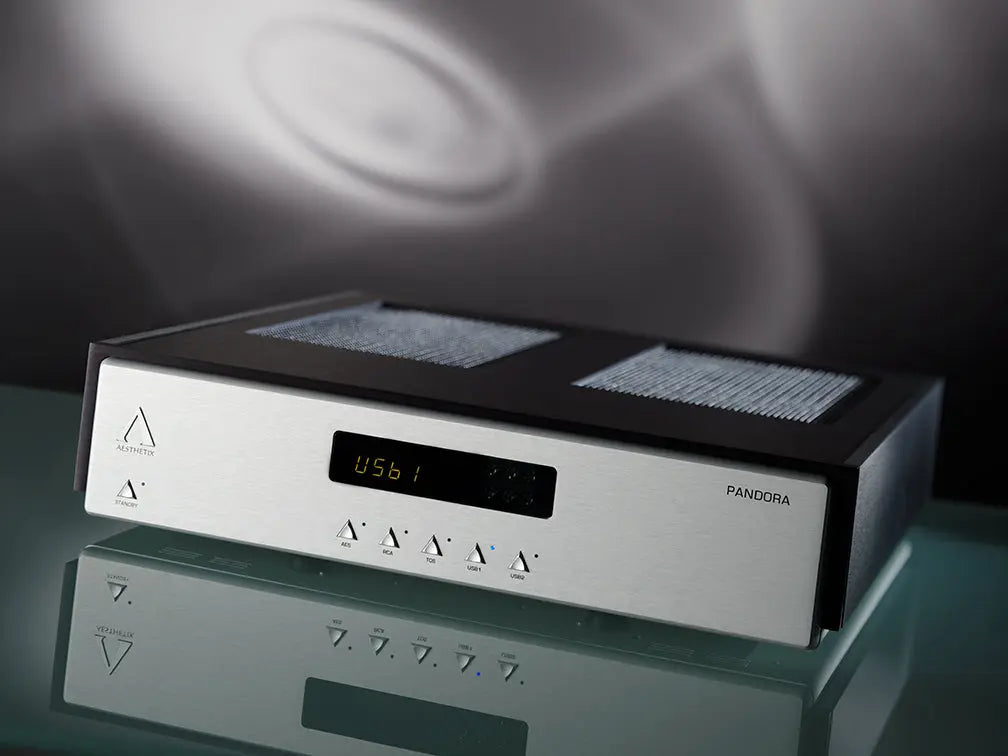



Pandora mk ii Tube Digital to Analog Converter
The Pandora is a vacuum tube based digital-to-analog converter with one USB and three SPDIF inputs. High quality construction techniques include an all-aluminum chassis, stainless steel faraday cage to isolate digital sections, multiple power transformers in a stainless steel enclosure, and multiple regulation stages. These components raise the bar for all digital products and are the ideal match for our Janus and Calypso preamps, and Atlas power amplifiers.
Pairs well with

Pandora mk ii Tube Digital to Analog Converter
Product details
Ultra Low Jitter and USB Noise Isolation
The Pandora USB solution uses the asynchronous transfer mode licensed from Gordon Rankin / Wavelength Technologies with an ultra-low jitter fixed-frequency crystal clock immediately adjacent to the DAC. This technology allows for jitter levels over one hundred times lower than previous USB solutions. USB is capable of Class 1 audio up to 96KHz / 24bit and Class 2 audio up to 192KHz / 24bit. SPDIF/AES inputs use a unique jitter reduction technology that offers jitter performance on par with asynchronous USB and are also capable of up to 192KHz / 24 bit. To combat computer generated noise pollution, we have designed in optical couplers that galvanically isolate the USB input and processing sections from the DSP section, including ground. There is no continuity between any part of the USB input and any part of the Pandora digital or analog sections. While expensive and difficult to do, it achieves a huge sound quality improvement over a directly-connected USB section that allows noise to infiltrate the audio circuitry.
Proprietary DSP and Precision Clocking
The DSP section utilizes the Motorola DSP 56362 for our specially designed oversampling filters, which adapt according to the incoming sample rate. Over 1.5 megabytes of static memory buffering is selectively used to completely isolate incoming data from USB and SPDIF from outgoing data to the DAC. The clock section of a digital product is absolutely critical for audio performance. Any jitter (tiny timing variations) or noise will cause the DAC device to perform analog conversions at incorrect and varying rates, causing clearly audible negative effects. The easiest timing solution - but also the most jitter prone - is to simply allow the DAC to use the clock of the incoming source device. A slightly better solution is to incorporate an internal clock at the DAC using an off the shelf crystal oscillator to regulate the timing. Pandora takes this a step further by utilizing specially manufactured crystal oscillators custom cut to our exacting specifications. These crystals offer radically lower jitter and noise than any standard issue part. There are separate crystals for 44.1KHz based sources (44.1, 88.2, 176.4KHz) and 48KHz based sources (49, 96, 192KHz). The clock section is powered by its own discretely regulated power supply, to isolate it from the DAC.
Fully Differential DAC plus Vacuum Tube Amplification
Digital to analog conversion is performed by the Burr-Brown PCM 1792A run in pure differential mode. Differential mode is a critical implementation feature that only amplifies the audio signal itself, cancelling noise and other digital artifacts. The digital side is isolated from the analog side, with discretely-regulated separate power supplies for each. Special attention is given to circuit layout and component selection. The Aesthetix reputation for state-of-the-art analog stages is continued in the Pandora, which features a current-sourced fully differential zero feedback vacuum tube amplifier (12AX7) being fed from the DAC. Differential amplifiers have the unique ability of rejecting "common mode" signals, particularly useful in digital audio products, where high speed clocks and other digital noise can disrupt the delicate analog circuitry. Both Pandora and Romulus feature Rel-Cap polypropylene coupling capacitors and Roederstein metal film resistors. Ground noise is reduced by using two separate, discretely regulated positive and negative power supplies for the voltage gain section. Output buffering is performed by one 6922 per channel, also run in pure differential mode with zero feedback. This is a unique configuration, providing much of the benefit of balanced operation for single-ended outputs. The output section also has separate discretely regulated positive and negative supplies which are completely isolated from the voltage gain power supplies.
Optional Volume Control
An optional high resolution relay-based volume control may be added to either Pandora or Romulus, allowing the units to directly drive a power amplifier, ideal for many systems. The volume control for Pandora and Romulus is very special. Typical digital products control volume entirely in the digital domain, where every 6dB of volume attenuation causes a loss of 1 bit of resolution. This means since most listening is done in the -30dB range, if one were playing a CD with 16 bit resolution and attenuating at 30dB, only 11 bits of resolution would remain, an incredible loss. The Pandora and Romulus volume control prevents all resolution loss by operating partially in the digital domain for small 1dB steps and partially in the analog domain using relay-based switched resistors for large 6dB steps. Using this method, eighty-eight 1dB steps are created with zero loss of resolution.
Specs and FAQs
Inputs
Card-based DAC with three digital input slots. AES/EBU, RCA Coax, Toslink standard on digital input 1 slot. AES/EBU and RCA Coax SPDIF capable of 192KHz / 24 bit. Digital section capable of the following frequencies: 32KHz, 44.1KHz, 48KHz, 88.2KHz, 96KHz, 176.4KHz, 192KHz, all with 24 bit resolution. USB standard on digital input 2 slot. USB capable of class 1 audio (96KHz, 24bit) and class 2 audio (192KHz, 24bit). 2nd USB input optional.
Outputs
RCA and XLR output
Weight and Dims
Unit Weight: 35 Lbs Dimensions: 18" width x 4 3/8" height x 18" depth